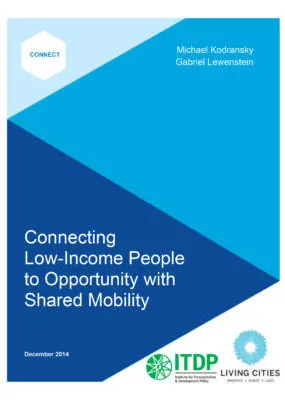This report was produced by ITDP for Living Cities and is reprinted here with permission. More information is available at LivingCities.org.
Shared-mobility programs like bike-share and car-share have significant potential to benefit low-income users, yet often do not reach that population. This report explores the specific opportunities and challenges facing shared mobility programs in expanding services to low-income communities.
In the last decade, shared mobility services such as bike-share, car-share and ride-share have taken off across the United States as a complement to local public transit and an alternative to private car ownership. As these models have developed, many have explored how the emerging field can more directly benefit low-income individuals, who often face longer and more costly travel times. However, current usage of shared mobility systems among low-income communities remains lower than usage by the general population overall.
This report is a survey of existing shared mobility strategies and their attempt to expand services to low-income individuals. It is our hope that the findings can inform operators, government agencies, funders, non-profit organizations and others as they try to tap into the potential of shared mobility strategies to improve the lives of low-income individuals.

